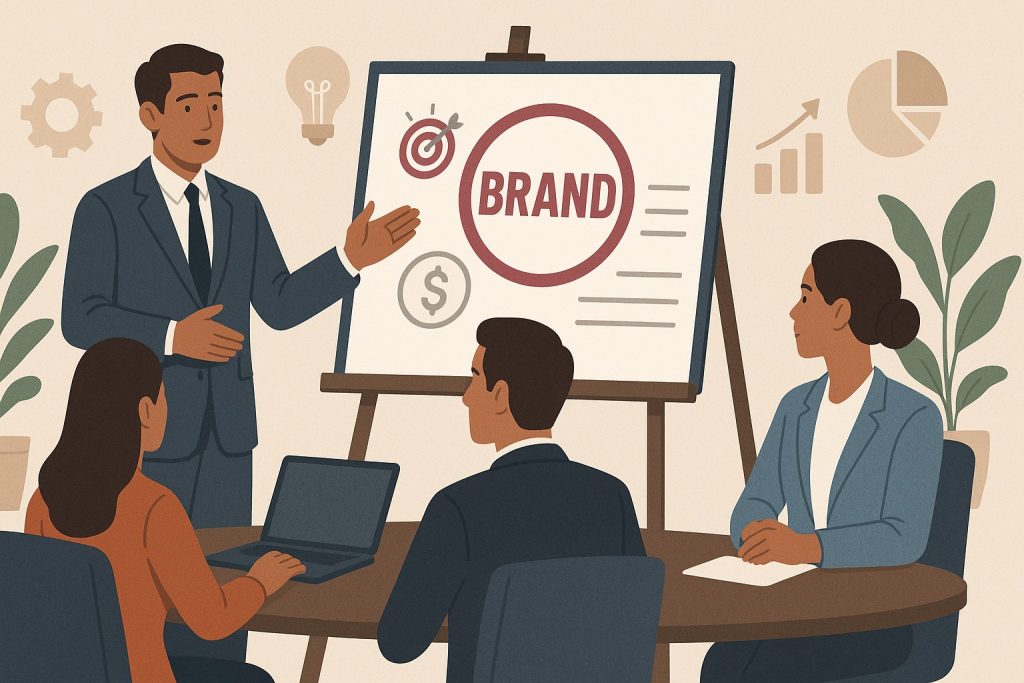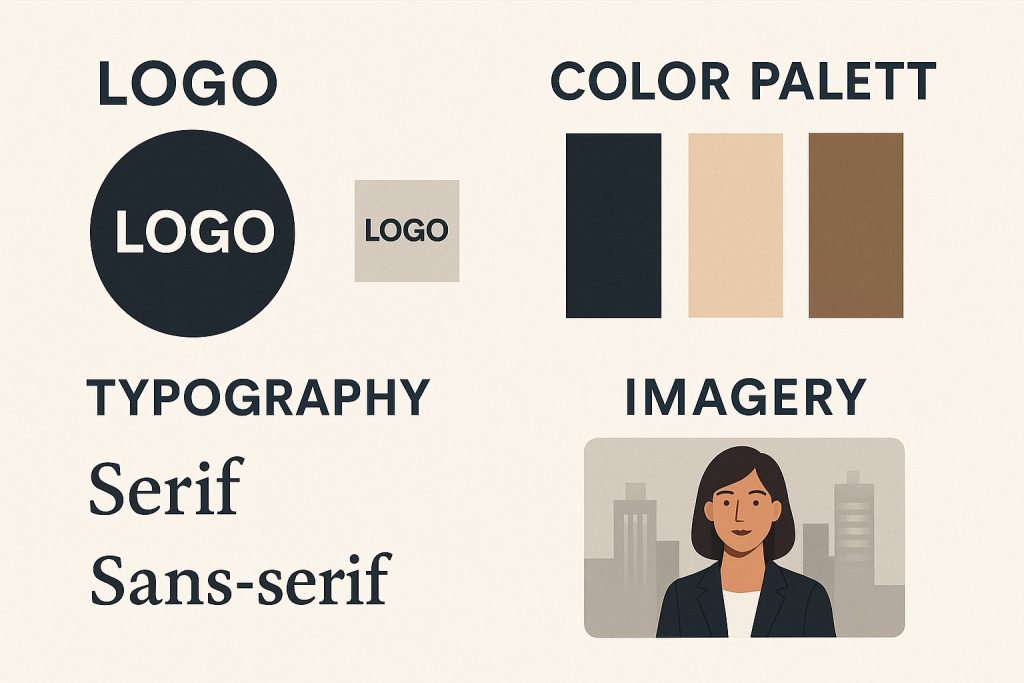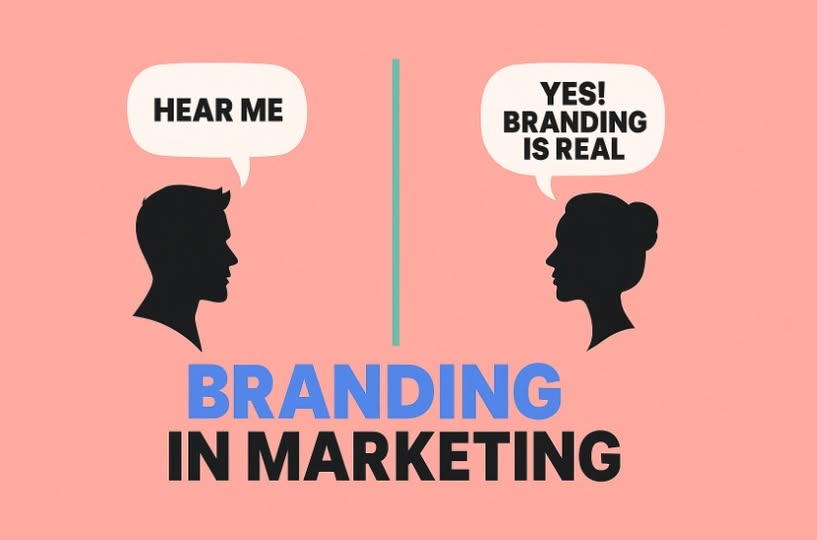Let’s get one thing straight. Your brand is not your logo.
Seriously. If you think a cool logo and a fancy color palette are all you need for “branding,” you’re leaving millions on the table. I’ve seen it happen more times than I can count.
Your brand is what people say about you when you’re not in the room. It’s their gut feeling about your business. It’s the reason they choose you over a competitor, even if your product is almost identical.

So, what is branding, really?
It’s the deliberate process of shaping that perception. It’s the story you tell, the promises you keep, and the experience you deliver. It’s the difference between being a commodity (like any old coffee shop) and being a destination (like Starbucks).
Forget the fluffy marketing jargon. We’re going to break down what branding actually is, why it’s the most important investment you can make, and how you can build a brand that people love, trust, and buy from again and again.
Branding vs. Brand Identity vs. Brand Image: Let’s Clear This Up
People throw these terms around all the time, but they are not the same thing. Getting this right is crucial.
- Brand Identity: This is the tangible stuff you create. It’s your logo, your website design, your color scheme, your typography. Think of it as the outfit your brand wears. It’s the collection of all brand elements that a company creates to portray the right image to its consumer. This is the part you control.
- Brand Image: This is the result. It’s the public’s perception of your brand identity. It’s how your customers and prospects actually see you. You can have a brand identity that’s meant to look “premium,” but if your customer service is terrible, your brand image might be “unreliable.” This is the part you influence, but don’t directly control.
- Branding: This is the active process. It’s the strategy you use to connect your brand identity with your desired brand image. It’s marketing. It’s customer service. It’s content creation. It’s every single action you take to shape that gut feeling in your customer’s mind.
See the difference? Your logo is just one small piece of your identity. Branding is the entire game plan for making that identity mean something powerful to your audience.
Why Should You Even Care About Branding? (Hint: It’s Your Biggest Moat)
A strong brand is the ultimate competitive advantage. It’s a moat around your business that competitors can’t easily cross. Here’s why it’s not just a “nice-to-have” – it’s a must-have.
1. Branding Drives Recognition and Trust
People buy from companies they know and trust. Think about it. When you need a new pair of athletic shoes, names like Nike or Adidas probably pop into your head instantly. Why? Because they’ve spent decades building brand recognition.
A consistent brand makes you memorable. When customers see your colors, logo, or hear your tagline, it should feel familiar. This familiarity builds trust. In a crowded market, trust is currency.
2. You Can Charge More (A Lot More)
Why does a Starbucks coffee cost $5 while the diner coffee costs $1? The beans aren’t that different. The difference is brand equity.
Starbucks isn’t just selling coffee. They are selling an experience, consistency, and a status symbol. People pay a premium for that brand promise. A strong brand moves your product away from a price-based comparison and into a value-based one. When people believe in your brand, they are less sensitive to price.
3. It Creates an Army of Loyal Customers
A good product gets you a sale. A great brand gets you a customer for life.
Look at Apple. People don’t just buy an iPhone; they become “Apple people.” They buy the MacBook, the Apple Watch, and the AirPods. They wait in line for new releases. This isn’t just customer satisfaction; it’s brand loyalty.
These loyal customers become your best marketers. They tell their friends, write glowing reviews, and defend you online. This word-of-mouth marketing is priceless and one of the most powerful brand building tips.
4. Branding Attracts Top Talent
A strong brand doesn’t just attract customers; it attracts A-players to your team. People want to work for companies they admire.
Would you rather work for a generic, unknown company or for a brand like Google, known for its innovation and amazing culture? Exactly. A strong employer brand makes recruiting easier and helps you retain the best talent, which is essential for scaling your business.
The Core Components of a Killer Brand Identity
Okay, so you’re convinced. You need a strong brand. Where do you start? You start by defining your brand identity. This is your foundation.
Step 1: Define Your Brand’s “Why” (Your Mission & Vision)
Before you pick a single color or font, you need to know who you are and why you exist.
- Mission Statement (The What & How): This is what you do, who you do it for, and how you do it. It should be clear and concise. Example: Tesla’s mission is “to accelerate the world’s transition to sustainable energy.”
- Vision Statement (The Why): This is your big-picture dream. It’s the future you want to create. It should be aspirational. Example: The Alzheimer’s Association’s vision is “a world without Alzheimer’s disease.”
Your “why” is your north star. Every branding decision you make should align with it.
Step 2: Pinpoint Your Target Audience
You cannot be everything to everyone. Trying to do so makes your brand generic and forgettable. You need to know exactly who you’re talking to.
Create a detailed customer persona. Go beyond basic demographics.
- What are their biggest pains and frustrations?
- What are their goals and aspirations?
- What kind of language do they use?
- Where do they hang out online?
- What other brands do they love?
The more you understand your audience, the better you can tailor your brand’s message to resonate with them on an emotional level and make sure brand goals to align with you businesses.
Step 3: Establish Your Brand Personality and Voice
If your brand was a person, who would it be? The wise mentor? The witty best friend? The rebellious rule-breaker?
Your brand personality dictates your brand voice—the tone and style of your communication.
- Dollar Shave Club: Witty, irreverent, and direct. Their voice is a huge part of their brand.
- Harley-Davidson: Rugged, rebellious, and freedom-loving. Their voice appeals to a specific psychographic.
- Volvo: Safe, reliable, and family-oriented. Their voice is reassuring and calm.
Your voice needs to be consistent across your website, social media, emails, and ads.
Step 4: Craft Your Visual Identity (The Fun Part)
Now you get to translate all that strategic work into visuals. This is the brand identity design phase.

- Logo: It should be simple, memorable, and scalable. It needs to look good on a billboard and as a tiny favicon in a browser tab.
- Color Palette: Colors evoke emotion. Blue often signals trust and professionalism (think Facebook, IBM). Red signals excitement and urgency (think Coca-Cola, Netflix). Choose a primary, secondary, and accent color scheme that reflects your personality.
- Typography: The fonts you use say a lot. Serif fonts (with the little feet) can feel traditional and established. Sans-serif fonts feel modern and clean.
- Imagery: The photos and graphics you use should be consistent in style and tone. Are they bright and energetic? Moody and artistic? Professional and corporate?
Actionable Branding Strategies to Build Your Empire
Defining your brand is step one. Now you have to bring it to life. This is the ongoing work of branding.
1. Content Marketing is Your Branding Megaphone
Content is the most powerful tool for expressing your brand’s personality, sharing your expertise, and building a relationship with your audience.
Through blog posts, videos, podcasts, and social media, you can tell your brand’s story. You can solve your audience’s problems and prove you understand their world. This builds authority and trust at scale. Every piece of content marketing is a branding opportunity.
2. Weave Your Brand into the Customer Experience
Branding isn’t just what happens before the sale; it’s the entire customer journey.
- Onboarding: How do you welcome a new customer? Is it a generic confirmation email or a personalized welcome sequence that reinforces why they made a great choice?
- Customer Support: Is your support team using the right brand voice? Are they empowered to solve problems in a way that delights customers and turns a negative experience into a positive one? Zappos built its entire brand on legendary customer service.
- Packaging: If you sell a physical product, the unboxing experience is a massive branding opportunity. Apple is the master of this. Their clean, minimalist packaging makes you feel like you’re opening something special.
3. Be Unbelievably Consistent
Brand consistency is non-negotiable. Every touchpoint a customer has with your business should feel like it came from the same brand.
This means your website, social media profiles, email signatures, and even how your team answers the phone should all be aligned. Inconsistency confuses customers and erodes trust. Create a brand style guide that documents your logo usage, color codes, fonts, and brand voice, and make sure your entire team uses it.
4. Tell Compelling Stories
Facts tell, but stories sell. People don’t connect with data sheets; they connect with stories.
What’s your founder’s story? What’s a story of a customer whose life you changed? TOMS Shoes built an entire brand around a simple, powerful story: buy a pair of shoes, and we give a pair to a child in need. That story is more powerful than any feature or benefit.
Final Thoughts: Your Brand is Your Legacy
Building a brand is not a one-time project. It’s an ongoing commitment. It’s the sum of every interaction, every product, and every word you publish.
It’s the hardest thing to build and the easiest thing to lose.
But a strong brand is what separates fleeting businesses from iconic legacies. It’s what allows you to build a community, not just a customer list. It’s what gives your work meaning beyond the balance sheet.
So stop thinking about branding as a line item in your marketing budget. Start thinking of it as the very soul of your business. Define who you are, tell your story consistently, and deliver on your promises. That’s how you build a brand that lasts.

